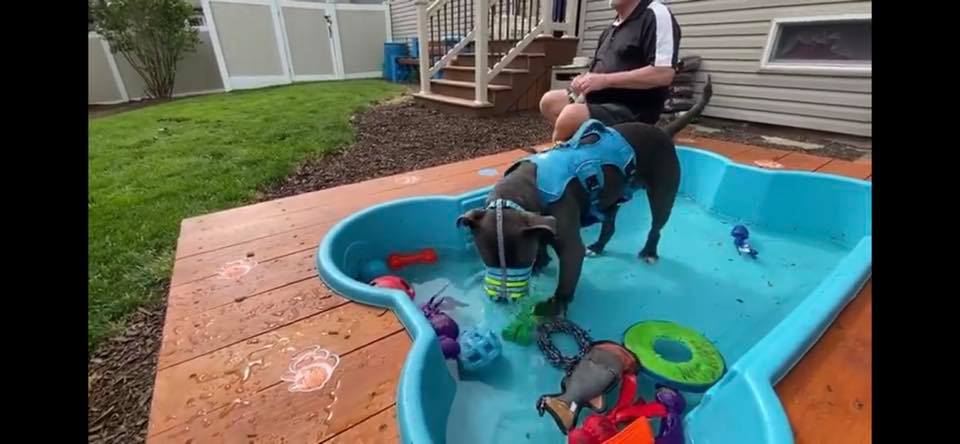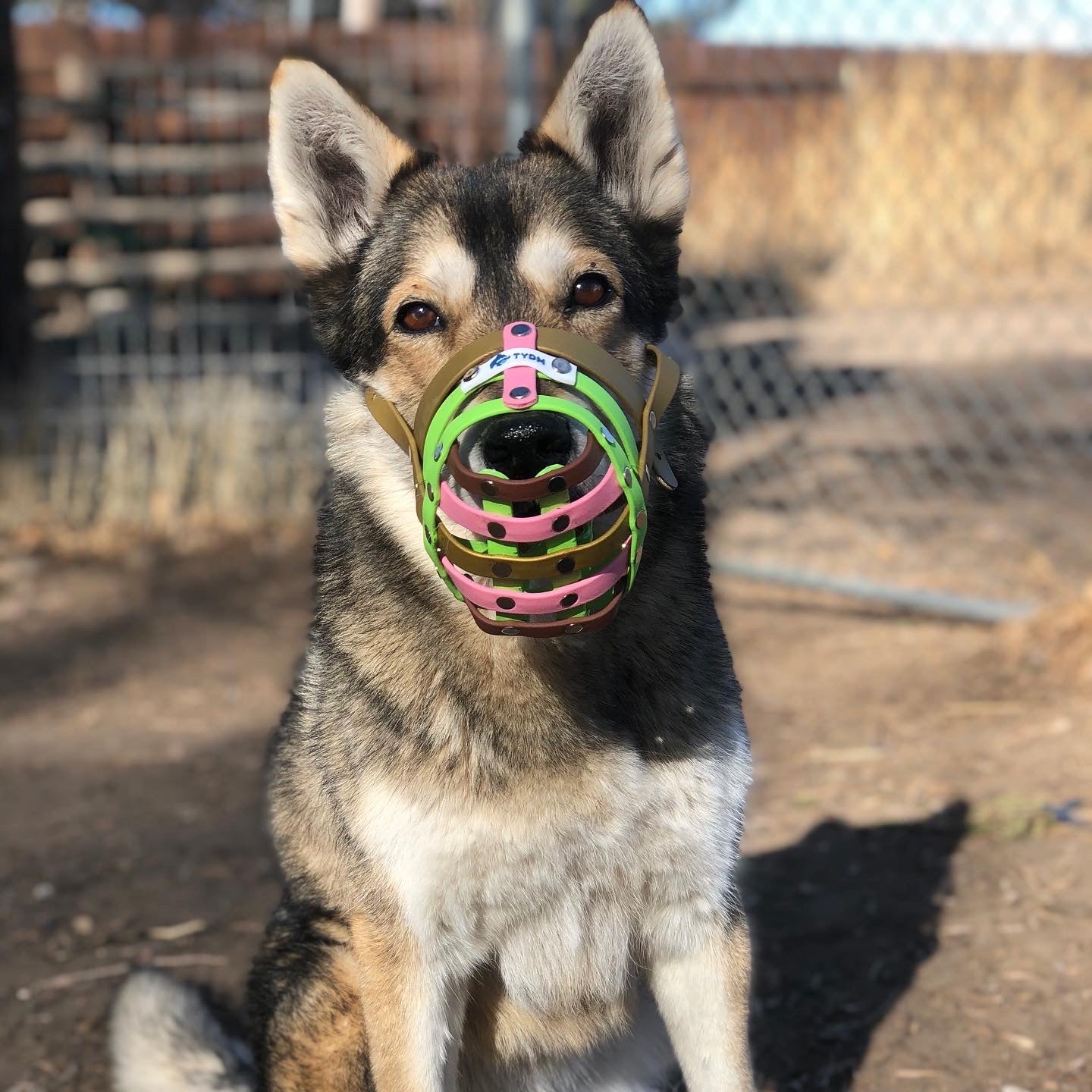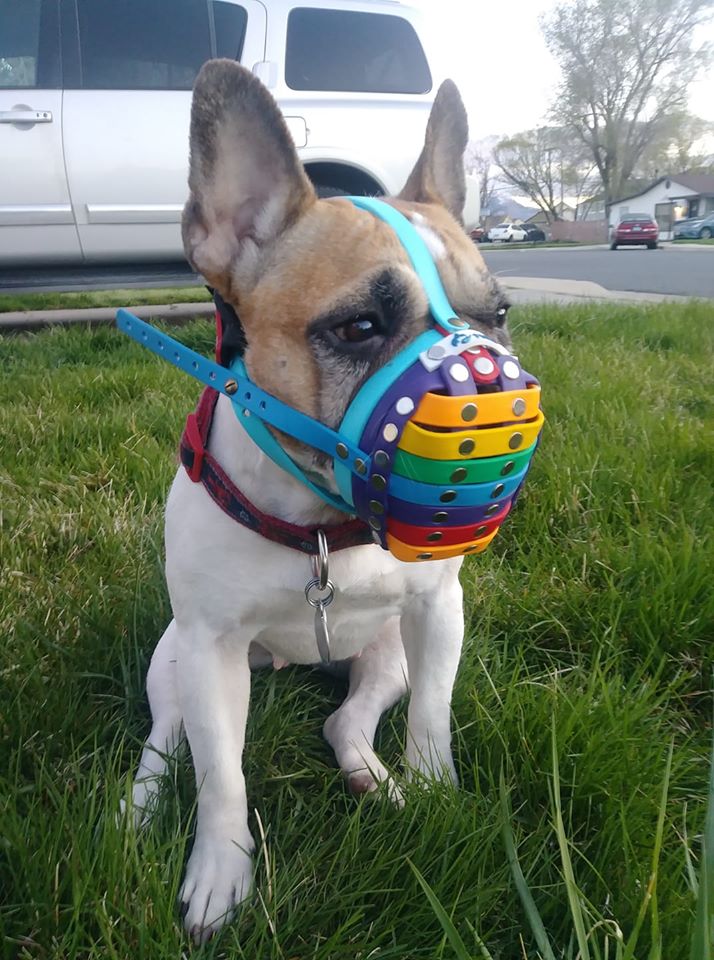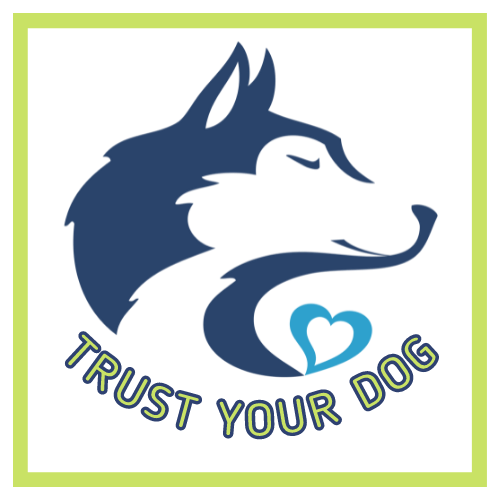FAQ

Can dogs pant and drink water while wearing a TYD muzzle?
The quick answer is, YES! However, this all depends on proper measuring of the dog's nose circumference. The dog's nose circumference should be measured while panting as large as the dog possibly can. A good gauge is to have the dog hold a ball in it's mouth when you measure if they won't pant while you measure.
If you can't get them to hold a ball or pant you can estimate the dog's muzzle circumference by making a loop with your measuring tape (or string) and feed them treats through the loop. If their mouth pulls the string open or touches the loop at all it's probably too small. These muzzles are not designed to keep a dog's mouth shut.
Photo COURTESY of Lauren Eyer Lukosius- thank you!

Are the biothane muzzles bite proof?
The answer is, it depends.
While the smaller biothane muzzles tend to be really sturdy and secure, especially if you add safety straps, the larger muzzles have a lot more flex to them. If you have a large dog that is a bite risk and does a lot of damage I don't recommend the biothane muzzles. The biothane muzzles can flex and fold into a dog's mouth if they have the intention to do a lot of damage. Now, can you ever really KNOW exactly what your dog's intentions are? Probably not and it may change depending on the situation.
That said, I would instead recommend the vinyl muzzle line as they offer full coverage and don't fold into a dog's mouth when pressure is applied from within. You still can choose a few colors and get the same benefits of the full pant, drinking capabilities of the biothane muzzles too.

Can you make a muzzle for my brachycephalic (aka short nosed) dog?
Yes, I've made quite a few short nose muzzles! I've also made muzzles for a few bull terriers as well with their sloped noses :-)
Photo COURTESY of Conner Kingfisher

Nose Types
Which Nose type is best for your dog?

How easy will it be to give my dog a treat in a TYD muzzle?
Muzzles are designed for two main purposes:
1) to keep the sharp pointy things inside the muzzle.
2) to keep things that shouldn't be inside the sharp pointy things out.
That said it is often a crucial part of a behavioral modification program designed by a trainer or vet behaviorist to be able to deliver reinforcement, most commonly food items that are valuable to the dog. There is really no "perfect" way to get treats inside of a muzzle without compromising the structural integrity and safety of a muzzle but I have a few different options for you depending on your dog's individual needs and temperament.
Top Left: Safety straps (with closed nose) provides the most coverage to keep the majority of things out.
Top Right: Regular front (with open nose) provides satisfactory coverage for most dogs for both Pica and bites unless they are really committed to getting something through the holes.
Bottom Left: Treat Hole (regular nose) offers an extra large gap in the front to deliver a treat directly into your dog's lips. This might create a softer spot in the front of the muzzle but not by much.
Bottom Right: Side Treat Hole (regular nose). This is by far the easiest and largest hole to deliver treats through however, the compromise is that it does reduce the overall safety of the muzzle if the dog were to bite.
***This option is not usually recommended so is not listed as an option when ordering. However, you can make a note when you place your order you'd like these treat holes if you think they would be a good fit for your dog.***
What's the word on rust?
To be completely transparent... I'm working on this one.
The tubular rivets I use are made of several different compounds. Silver and black rivets are nickel plated metal rivets. Both of those rivets have been reported to rust when the dogs wear the muzzles. It makes sense, the dog's mouths are wet and sobery and if they drink there's another added source for water. I've looked for stainless steel options and I, to this date, can't find them (if you find them LET ME KNOW!!!).
That said these rivets despite the rust seen inside of the muzzle seem to be holding just fine thus far. If you have rivets pop out please CONTACT ME
***Brass rivets definitely seem to be holding up better to the moist environment that is a dog's face! So if you're looking for a rivet that isn't rusting opt for the brass option.***
How to reduce rusting:
- Dry your muzzles after use and before storing them
- Apply an oil such as Olive Oil or maybe even coconut oil to coat the rivets and protect them from water. Now the dog's will likely lick this off but it's better it's edible and provide some protection than none at all or using a toxic oil.
- Lastly, you can search for rust resistant sprays/paints but I'm hesitant to suggest using them as I don't want your dog licking toxic substances inside of their muzzle. I personally, wouldn't do this and this is why I don't do it in the fabrication process.
I've just been told I need to pay more to get my package. What's this about?
Import Fees and Duties
TYD products are made and shipped from the United States. Each country has its own rules and regulations on import fees and duties. This is unfortunately out of TYD's control and part of importing an item into your country. Please look into your country's regulations on importing goods from the United States for more information.

Why does my cart have so many items in it?
As part of our custom muzzle- and leash-making process, the website adds custom items to your cart. For example, you may have ordered a single leash but will have three items in your cart to accomodate for the locking carabiner and brass rivet add-ons. This allows us to charge appropriately for add-ons while tracking your custom requests on our end. If you would like to remove an add-on, you must remove the entire item and re-customize it.

Where's my confirmation email?
Sometimes our confirmation emails get flagged as "promotional." If you haven't seen your receipt or confirmation yet, be sure to check promotional and spam folders!

